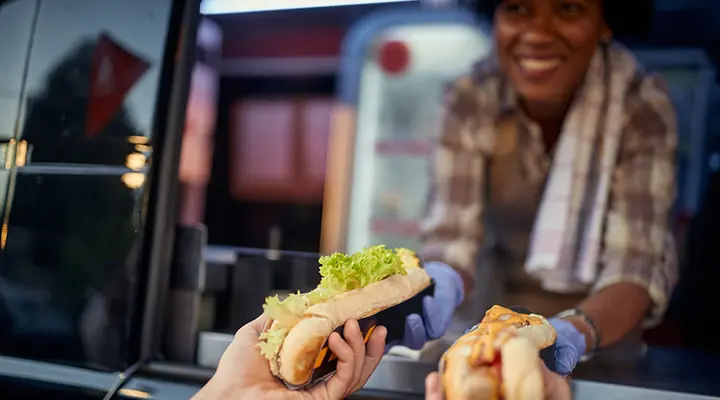Noise is one of the most common health hazards in the workplace. Exposure to high noise levels can cause permanent hearing damage, including tinnitus (ringing in the ears) and deafness.
Although the number of new cases is declining, every year there are new cases of permanent Noise-Induced Hearing Loss (NIHL) attributable to excessive noise in the workplace.
Did you know:
- Noise-induced hearing loss is the second most common reason for employers’ liability insurance claims for occupational health.
- 1 in 5 adults in the UK have hearing loss or tinnitus, or are deaf.
- In the UK an estimated 1.2 million have hearing loss severe enough that they are unable to hear most conversational speech.
- Currently there are 12 million adults in the UK with hearing loss. It is estimated that this figure will rise to 14.2 million by 2035.
Getting to grips with improving noise in the workplace doesn’t have to be difficult. In this article I will outline control measures for noise at work. It includes the three main UK regulations for controlling noise in the workplace. It also identifies signs of hearing loss in adults and outlines the legal requirements for a noise risk assessment.
Early signs of hearing loss in adults
Common signs of hearing loss include:
- Difficulty with conversation and asking people to repeat themselves
- Having the television louder than other people need
- Trouble hearing what people say on the telephone
- Difficulty in catching sounds like t, d and s
- Tinnitus (ringing, whistling, buzzing or humming in the ears) immediately after exposure to noise
If you experience any of the symptoms above and are concerned, speak to your GP and ask for an assessment of your hearing. If you feel your workplace may be a reason for these issues, speak with a relevant member of staff and ask if they’ve considered noise awareness training.
Noise Regulations UK
The Control of Noise at Work Regulations 2005 and Control of Noise at Work Regulations (Northern Ireland) 2006 require employers to assess and control the risks to their employees’ health that arise from exposure to noise. The regulations state that where noise exposure is unavoidable, employers are expected to select suitable work equipment and to manage and minimise the risks.
Depending on your workplace, there may be other relevant regulations such as:
- Supply of Machinery (Safety) Regulations 2008 (Great Britain)
- Supply of Machinery (Safety) Regulations 2008 (Northern Ireland)
- Noise Emission in the Environment by Equipment for use Outdoors Regulations 2001 (Great Britain)
- Noise Emission in the Environment by Equipment for Use Outdoors Regulations 2001 (Northern Ireland)
For employers to be able to manage health and safety risks effectively, they need to fully understand them. Only when they have a clear understanding of the noise-related risks and how they affect people, can they adequately protect their employees.
Workers also need to know the risks and how to work safely. Employers must provide them with clear instructions and training, so they understand the risks, safe working practices, the effects of noise and the purpose of hearing protection. Any PPE supplied should be accompanied by fitting, use and care instructions.
Undertaking a Noise Risk Assessment

A risk assessment needs to be completed if work is done in noisy environments. Employers must carry out a risk assessment to decide what action is needed, and they must develop a plan to protect people.
A record must be kept of the findings of the risk assessment and of the actions taken, or intended to be taken, to comply with the law.
A review of the risk assessment should take place if circumstances change, or the assessment is no longer valid.
The risk assessment should:
- Identify where there may be a risk from noise and who it affects.
- Contain an estimate of your employees’ exposures to noise. This should then be compared to legally established exposure limits and actions limits.
- Identify what you need to do to comply with the law. This includes whether there is a need for noise-control measures and/or personal hearing protection, and whether working practices are safe.
- Identify any employees who need to be provided with health surveillance and whether any are at particular risk.
Control measures for noise in the workplace

Once a noise risk assessment has been completed and the risk of noise has been assessed, the next step is to control the risks.
1. Eliminate the source of the noise
The first, and by far the most effective, way to prevent hearing damage is to control noise at the source. You can sometimes achieve this by reducing the noise so that it is no longer a hazard, or by eliminating the noise altogether.
2. Move the source of the noise
If noisy equipment must be used, consider whether the equipment can be moved into an area where there are no workers.
3. Enclose the noise or implement Engineering Controls
Where noisy equipment can’t be moved, the next level of control is to reduce the level of noise by enclosing it within sound insulation or by modifying the equipment to make it less noisy.
Equipment modifications, referred to as engineering controls, can also reduce noise. For example:
- Installing anti-vibration machine mountings – a process called damping.
- Fitting silencers to air exhausts and blowing nozzles.
- Reducing drop heights to avoid or minimise noise from metal-on-metal impacts.
4. Reduce exposure to noise by adopting administrative controls
If you can’t reduce the level of noise through elimination or moving the source, or implementing engineering controls, you should adopt administrative controls. This is covered in Topic 5 of our Noise Awareness Course.
Administrative controls can be used to:
- Limit the time workers spend in noisy areas.
- Limit the number of workers within the area.
- Identify hearing protection zones.
- Provide frequent rest breaks away from the noisy environment.
5. Use Hearing Protection PPE
Finally, the least effective control measure is to use PPE. Ear defenders, ear plugs and other hearing protection are the least effective control measure because individuals are still in an environment with dangerous levels of noise.
An employer must supply hearing protection if there is a requirement for it. They must also be capable of reducing the noise exposure to safe exposure levels. However, workers must still be able to communicate without removing the protection.
Summary
Exposure to loud noise at work can cause permanent hearing damage. Therefore, organisations have a responsibility to protect their workers from the harmful effects of noise in the workplace. This includes all workers whether employed on a temporary, permanent, or casual basis.
Employers must ensure that noise doesn’t exceed the legal exposure limits. If noise does exceed these limits, the organisation must implement measures to eliminate, or reduce the exposure to acceptable limits, using control measures. Employees must receive clear instructions and training, so they understand the risks, safe working practices and the purpose of any supplied hearing protection. Lastly, if hearing protection is required, it must be supplied by the employer. It should also be accompanied by fitting, use and care instructions.
Need Noise Awareness training for your employees?
I2Comply’s RoSPA-Assured online noise awareness course makes you aware of the hazards posed by high noise levels in the workplace and identifies the measures that you can take to avoid hearing damage. If this is a new issue for your business, and you’d like a better understanding of what the course can do, please get in touch via phone at 0333 577 5016.




